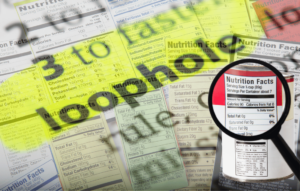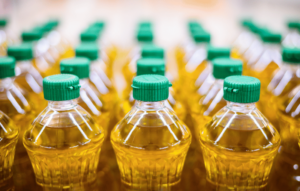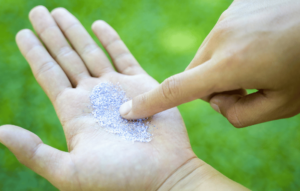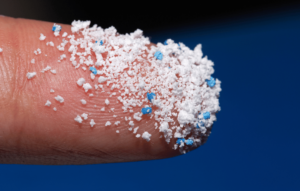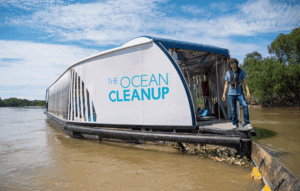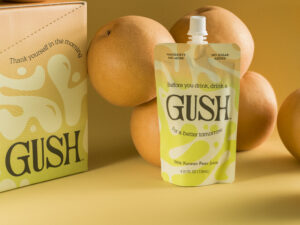In what sounds like a government rebrand of the stork delivering babies, the U.S. Food and Drug Administration (FDA) has announced Operation Stork Speed – an initiative aimed at revamping America’s infant formula industry. The goal? To ensure safer, more reliable, and “nutritious” baby formula options for American families. Given the recent history of formula shortages, recalls, and contaminant scandals, it’s about time someone paid attention. But is this truly a move toward better infant nutrition, or are we just repackaging the same problems under a shinier label?
Let’s dig in and see what’s really happening with baby formula in America—because if history has taught us anything, it’s that regulatory agencies and corporate interests don’t always have babies’ best interests at heart.
A Much-Needed Update… or Bureaucratic Lip Service?
According to the FDA’s announcement, the agency is implementing several initiatives to improve infant formula, including:
Reviewing infant formula nutrients for the first time since 1998 (because apparently, baby nutrition science froze in time before the turn of the millennium).
Increasing testing for heavy metals like lead, arsenic, and cadmium in infant formula and baby food.
Encouraging more transparency and clearer labeling (though we’ve seen how that goes with other food industry reforms—slapping “natural” on anything and everything).
Expanding personal importation policies to help families access formulas from other countries (because European formulas have long been considered superior to their American counterparts).
Collaborating with the U.S. National Institutes of Health (NIH) and other scientific bodies to research health outcomes of formula-fed infants over their lifespan (a.k.a. admitting we’ve just been winging it until now).
As part of Operation Stork Speed, the FDA is encouraging manufacturers to create new, nutritionally improved infant formulas while ensuring greater transparency regarding ingredients. This initiative, published in January of 2025, aligns with HHS Secretary RFK Jr.’s broader Make America Healthy Again agenda and follows the FDA’s previously published strategy to enhance formula supply resiliency.
While some of these initiatives sound promising, the real question is whether they will lead to tangible improvements—or just more bureaucratic red tape and industry loopholes.
The MAHA Movement: A Mother-Led Revolution for Infant Health
One of the most vocal groups pushing for better standards in infant nutrition is the Make America Healthy Again (MAHA) movement, spearheaded by Robert F. Kennedy Jr. and an army of passionate doctors, wellness professionals, and parents who are sick of their children being poisoned. The MAHA movement has taken on the fight for cleaner baby formula, safer food, and more transparency in regulatory decisions affecting children’s health. Unlike traditional government-led initiatives, MAHA is largely grassroots and mother-driven, harnessing the power of social media, independent research, and direct advocacy to challenge the status quo.
Mothers in this movement have been instrumental in exposing harmful ingredients in baby formula, advocating for stricter safety standards, and pushing for greater support for breastfeeding. They have also highlighted the corporate influence over FDA regulations, showing how large formula manufacturers have prioritized profit over infant health. By applying consistent pressure and demanding accountability, the MAHA movement has already helped push for increased testing of heavy metals and brought much-needed attention to the dangers of synthetic additives and seed oils in formula.
Contaminants in Infant Formula: Consumer Reports Sounds the Alarm
One of the biggest revelations following the announcement of Operation Stork Speed is the independent testing conducted by Consumer Reports, which found concerning levels of arsenic, lead, PFAS, BPA, and acrylamide in some infant formulas. This testing, conducted across 41 different powdered formulas, revealed shocking results:
Abbott Nutrition’s EleCare Hypoallergenic formula contained 19.7 ppb of inorganic arsenic, nearly double the EPA’s drinking water limit.
Similac Alimentum (also Abbott) had 15.1 ppb of arsenic.
34 out of 41 formulas contained lead, with levels ranging from 1.2–4.2 ppb.
PFAS chemicals were present in several formulas, including legacy PFAS compounds like PFOS, which is already restricted in drinking water.
BPA and acrylamide, both of which are potential carcinogens, were detected in Enfamil’s Nutramigen formula.
While none of these formulas outright violated existing regulations, the findings highlight the major gaps in FDA oversight and raise the question: Are we doing enough to protect infants from toxic exposure?
Consumer Reports has since called for greater transparency and stronger regulations, demanding that HHS and RFK Jr. provide the FDA with adequate resources to enforce the promised changes under Operation Stork Speed.
The Real Problem with Modern Infant Formula
While formula is a necessity for many families, the ingredients used in many conventional formulas raise serious health concerns. From preservatives and inflammatory oils to heavy metal contamination and synthetic additives, the modern formula industry has prioritized cost-cutting and shelf stability over infant health. If parents knew what was really in these formulas, many would demand drastic change.
Preservatives: Long Shelf Life, Short-Term Thinking
Many conventional baby formulas rely on synthetic preservatives like butylated hydroxyanisole (BHA) and butylated hydroxytoluene (BHT). These compounds, commonly found in processed foods, are used to prevent fats from turning rancid. But here’s the kicker: both have been linked to hormone disruption and potential carcinogenic effects.
The fact that these chemicals are being fed to the most vulnerable humans—newborns whose bodies are in crucial developmental stages—should be a scandal in itself. Yet, instead of removing these additives, the industry has largely ignored concerns, while regulatory agencies have been slow to act.
Seed Oils: The Infant Gut Gamble
Another major concern in baby formula is the high content of inflammatory seed oils like soybean, sunflower, and palm oil. These oils serve as the fat source in most formulas, but they come with problems:
Omega-6 overload: Seed oils are rich in omega-6 fatty acids, which promote inflammation when consumed in excess.
Calcium absorption issues: Palm oil in formulas has been linked to reduced calcium absorption in infants, which could impact bone health.
Environmental destruction: The production of palm oil is a leading driver of deforestation, endangering species and disrupting ecosystems.
Heavy Metals in Formula: What’s Really Hiding in That Bottle?
In recent years, alarming reports have shown that baby formulas contain dangerous levels of heavy metals, including lead, arsenic, cadmium, and mercury.
Why is this happening? Heavy metals enter the food supply through contaminated soil and water, and manufacturers have failed to properly test for or filter them out. Despite existing safety regulations, lead and arsenic have been found in baby formula at levels considered dangerous to developing brains.
The FDA’s plan to increase testing for heavy metals is a step in the right direction, but let’s be honest: it shouldn’t have taken decades of data and advocacy from independent researchers to get to this point.
Synthetic Additives: Because Babies Need a Chemistry Experiment?
Many infant formulas contain synthetic emulsifiers, stabilizers, and vitamins to enhance shelf stability and meet nutrient requirements. But just because these additives are legally allowed doesn’t mean they are optimal for infant health.
For example, carrageenan, a thickening agent, has been linked to gut inflammation in some studies. Meanwhile, synthetic vitamins may lack the bioavailability of natural versions, meaning infants may not absorb them effectively.
Plastics: Microplastics and BPA Contamination
Recent studies have confirmed that microplastics and BPA are widespread in infant formula, largely due to packaging materials and production processes.
Microplastics from polyethylene and aluminum foil linings have been found in virtually all tested powdered formulas. Research suggests these plastic particles can lead to intestinal inflammation, immune stress, and neurotoxicity in infants.
BPA, a known endocrine disruptor, continues to leach from can linings into liquid formulas, exposing infants to hormonal disruption and developmental risks.
Despite mounting evidence, regulatory action on plastic contamination in formula remains slow, leaving parents to navigate the risks on their own.
The Need for Advocacy and Policy Change
It’s clear that the FDA’s “Operation Stork Speed” is a long-overdue attempt to address systemic failures in the infant formula industry. However, meaningful change will only happen if consumers push for stricter regulations, demand transparency, and support ethical brands.
Parents, advocacy groups, and health organizations must:
Continue independent testing to keep formula companies accountable.
Demand full disclosure of ingredients and contaminant levels from manufacturers.
Support legislation that imposes stricter safety standards on infant formula.
The Importance of Breastfeeding: Nature’s Perfect Nutrition
Breastfeeding is, without question, the gold standard of infant nutrition. Breast milk is perfectly designed to meet a baby’s nutritional needs, providing essential fatty acids, immune-boosting antibodies, and beneficial gut bacteria that no formula can replicate. Research has consistently shown that breastfed babies tend to have stronger immune systems, lower rates of allergies, and better cognitive development compared to formula-fed infants.
That said, breastfeeding is not always an option for every mother. Some women struggle with low milk supply, medical conditions, or workplace barriers that make exclusive breastfeeding difficult or impossible. It is important to acknowledge that shaming mothers who use formula is not the answer. Instead, the focus should be on ensuring that formula-fed babies receive the safest, cleanest, and most nutritious alternatives possible.
What Are the Alternatives?
For parents who want to avoid the pitfalls of conventional formula, there are better options available. While breastfeeding is the ideal choice when possible, there are cleaner and more nutrient-dense formula alternatives that can provide safer nutrition without the industrial chemicals and additives.
Cleaner, Organic Formulas
For those who need formula, organic and minimally processed options can offer a better alternative. Some things to look for:
No seed oils: Opt for brands that use beef tallow, coconut oil, ghee, or other non-inflammatory fat sources.
No synthetic preservatives or additives: Avoid formulas with BHT, BHA, or carrageenan.
European formulas: Brands like HiPP and Holle tend to have stricter ingredient standards than many American options.
Conclusion: Is This a Genuine Shift or Just PR?
While the FDA’s new infant formula initiatives sound promising on paper, history suggests that without consumer pressure and regulatory accountability, we may get a fancier version of the same flawed products.
If we truly want what’s best for the next generation, we need to demand better standards, reject harmful ingredients, and push for real transparency in the infant formula industry. Otherwise, we’ll just be stuck with another Band-Aid fix—and babies deserve better than that.


